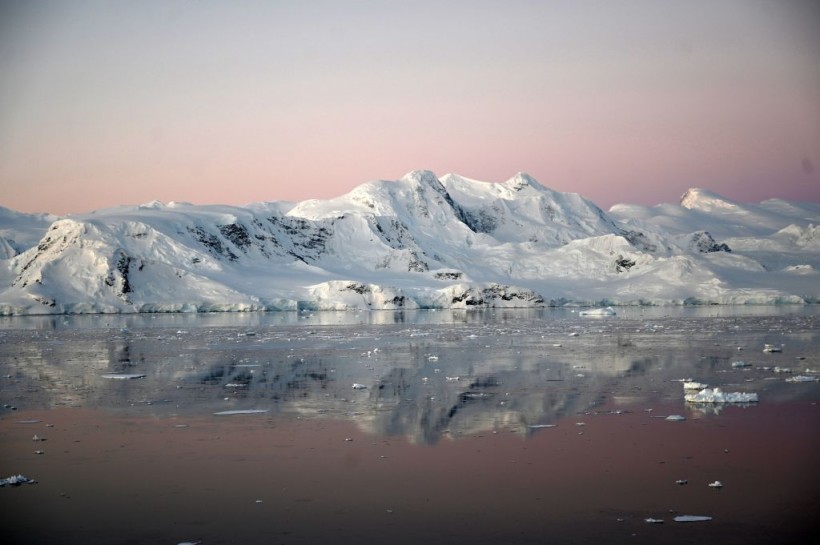A new study confirmed what may be the culprit behind the massive loss of oxygen composition in the Earth's atmospheric regions. The phenomenon was already detected during ancient times, but the sole factor that induced the event was not clear up to this date. The study was made possible through the specimens collected from the tiny bubble pockets buried at least 1.5 million years ago in the thick ice sheet of the Antarctic.
Culprit Behind Oxygen Level Decline, Revealed

TOPSHOT - View a glacier at sunset at Chiriguano Bay in the South Shetland Islands, Antarctica, on November 07, 2019.
The unknown culprit that removes significant amounts of oxygen straight from our atmosphere has extracted the specified gas for 800,000 consecutive years during the ancient Earth. In the latest investigation conducted by the experts, the bubbles trapped in the thickness of the Antarctic ice sheet gave clues to what may have caused the oxygen reaping, as well as the reason behind the bizarre atmospheric event.
Rice University's Department of Earth, Environmental and Planetary Sciences expert Yuzhen Yan, who authored the research, said in the university's press release that there had been several hints uncovered from numerous studies which point to the gradual decline of oxygen levels since the late Pleistocene. According to the expert, the most potential reasons for the disturbance of the specified gasses are activities produced by glaciers.
Glaciation, as explained by Yan, had levels intensified over the course of the years, expanding geological effects and affecting the atmospheric contents of the planet. The impact of glaciers eventually became global, leading to the unexpected weathering of minerals and rocks.
Weathering is an essential geological process in which the rocky fragments break down into various sizes, each filled with certain groups of minerals and metals that could oxidize after exposure. Among the best examples of chemical weathering is the common rusting of iron sheets and iron-based materials after being induced by atmospheric oxygen exposure.
Glaciation, Weathering, and Global Sea Levels May Have Depleted Significant Amounts of Oxygen Straight from the Atmosphere
Yan explained that when a sedimentary reservoir produces fresh and vulnerable crystalline surfaces, heavy activities of weathering will occur, and it will surely deplete a lot of the atmosphere's oxygen levels.
Yan was a previous member of the Princeton University team who worked on a 2016 study that utilized the air bubbles composed inside ice core samples to know how much of the planet's atmosphere was exhausted. According to the initial findings, there had been an estimate of a 0.2 percent decline in oxygen rates over the past 800,000 years.
On the other hand, the latest study included several bubble recordings based on older ice cores. The glacial cycle was found to double 1 million years ago based on the investigation. Although the significant ice age took place around 2.7 million years ago, confirmed glacial cycles have followed the event.
Layers of ice grew unto each other and overlapped during the phenomena, which covered one-third of the planet with thick ice. After the low temperatures and massive sheets retreated to the poles, the glacial cycle continued for about 40,000 years and up until 1 million years ago.
According to the experts, the decline was induced by the imbalance between the production and consummation of oxygen rates in the atmosphere. Futurity reported that the global sea levels may also have corresponding impacts on the excess oxygen and increased weathering. According to Yan, the landmass previously covered by advancing sea waters may already have been strongly exposed to the oxidation of the atmospheric gas.
Overall, the sea-level effect accounts for a quarter of the total decrease observed. Although it is not unreasonable, the tests showed that the magnitude of weathering could have occurred, and it could still serve as a basis for the glaciation magnitude that the experts procured over the investigation. The study was published in the journal Science Advances, titled "Ice core evidence for atmospheric oxygen decline since the Mid-Pleistocene transition."
RELATED ARTICLE: Origin of Mysterious Black Glassy Rocks in Atacama Desert Found Through Clues Not From Earth
Check out more news and information on Geology in Science Times.














